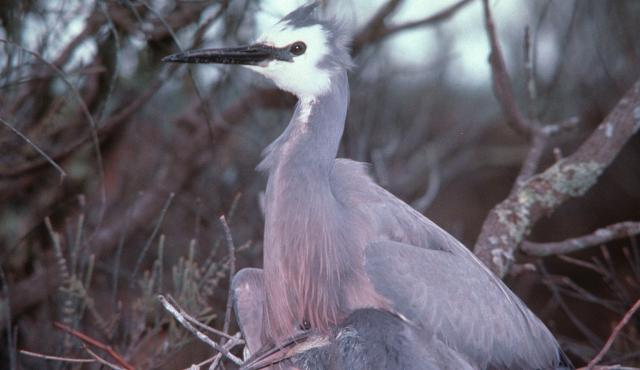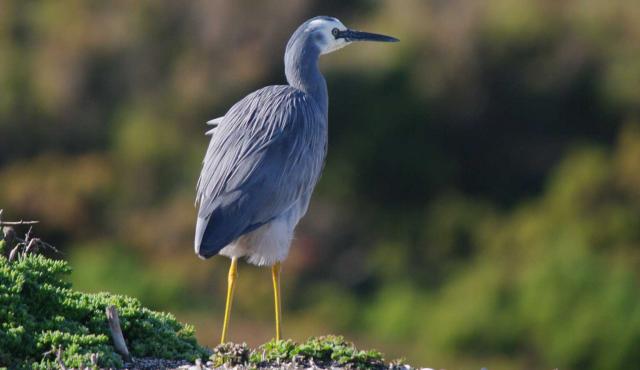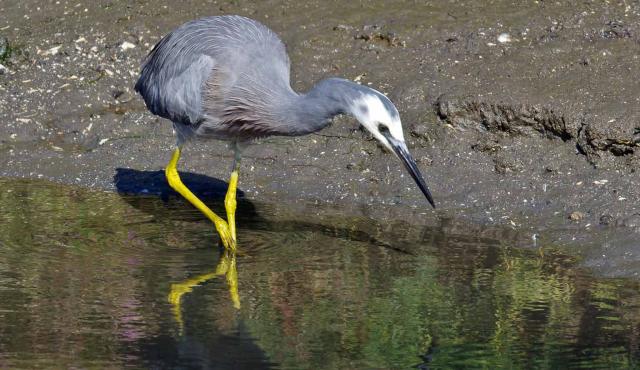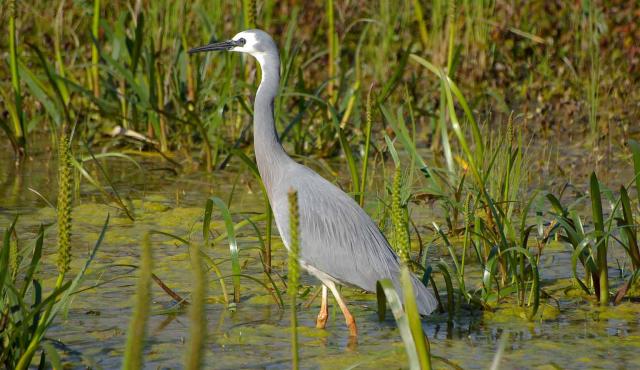A range of teacher professional learning programs will be developed to accompany the Biodiversity of the Western Volcanic Plains online outreach...





White-faced Heron
Egretta novaehollandiae
Breeding season mainly October to December. May breed outside this season in response to rainfall. Both sexes share incubation of eggs and care of young. Builds nest in tall trees. Female lays 3 to 5 pale blue eggs. Incubation period 21-24 days. Young fly 40-45 days. Normally nomadic.
| Details | Description |
| Type | Bird |
| Group | Heron |
| Identifying Characteristics | |
| Distinctive Markings | Rufous grey plumes on lower neck and upper breast with a characteristic white face. |
| Diet | Carnivore. Small, aquatic creatures including fish, insects and amphibians. |
| Habitat | Sea coasts, marshes, lakes, flooded fields. Lowlands to 1500 m. |
| Native Status | Native to Australia |
| Sounds | Harsh croak or gobble. "Urrrk, urrrk - urrk". "Arrgh arrrgh, arrrgh graaow". |
| Taxonomy | |
| Phylum | Chordata |
| Class | Aves |
| Order | Ciconiiformes |
| Family | Ardeidae |
| Genus | Egretta |
| Species | novaehollandiae |

Distribution maps indicate current and historic locations where species have been sighted.
Source: Atlas of Living Australia
| Conservation Status | |
| DEPI Advisory List | Not listed |
| FFG Act | Not listed |
| EPBC Act | Not listed |
The conservation status of species is listed within Victoria and Australia.
The Department of Environment and Primary Industry (DEPI) Advisory List consists of non-statutory advisory lists of rare or threatened flora and fauna within Victoria.
The Flora and Fauna Guarantee Act 1988 (FFG Act) lists threatened species in Victoria. Under the Act, an Action Statement is produced for each listed species.
The Environment Protection and Biodiversity Conservation Act 1999 (EPBC Act) is the Australian Government’s key piece of environmental legislation, listing nationally threatened native species and ecological communities.



